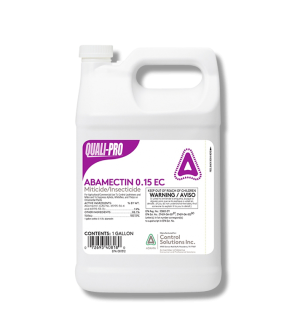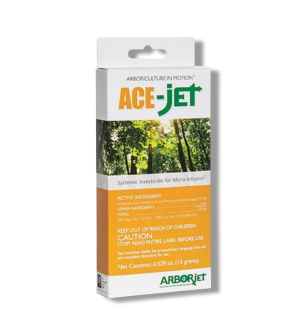Spider Mite Control
Most Effective Products
Spider Mite Control: How to Get Rid of Spider Mites
This article is a general spider mite control guide. Using the products and methods suggested will help you to completely control spider mites populations. Follow this DIY guide and use the recommended products and we guarantee 100% control of spider mites.
Compared to most pests, spider mites are serious ornamental, crop, and tree pests that quickly reproduce and mature in a short amount of time, while also becoming resistant to most chemicals. In each stage of their development from the larvae, nymph, and adult stage they produce significant amount of damages to plants by feeding on its chlorophyll.
As a result, the dead plant cells results in reduction of photosynthesis leading to decrease of plant growth. As spider mites continue feeding on the plant, its leaves become yellow, eventually causing the foliage to die. If these damages are not apparent, then the unaesthetic webbing they make on ornamental plants like roses will make itself known as it covers leaves, flowers, and sometimes entire foliages.
With many species of spider mites, they are so small to the human eye that their populations go uncontrolled until damages are already present on foliage. Typically, when homeowners inspect the damaged parts of the plant they can unknowingly transport these hitchhiking pests to other uninfected plants. Spider mites are best controlled by taking action with the recommended products and steps as the weather just begins to warm-up in your region.
Identification
Before you can proceed with a treatment program, you will need to be certain that the pest infesting your plant is a species of spider mite. Careless identification can lead you to using the wrong or ineffective insecticides, which can be a waste of your time and finances. While each species of spider mite will vary in some of their features, they will share some distinguishing traits. To see spider mites, you will need to examine them under a microscope or magnifying glass.

- Depending on the season and species of spider mites, their colors will range between white, red, brown, orange, yellow, or green. Most species of spider mite females have large dark spots on each side of their body with a clear green or yellow coloration, except for female carmine mites, which are red. In cooler areas, overwintering female spider mites have a red or orange color.
- Spider mites are not insects at all, but a type of arachnid. Like most spiders or ticks, they have 8 legs with the exception of no antennae, one round oval body, and two red eyespots at the front of their bodies. Newly hatched spider mites have 6 legs, but when further developed attain 8.
- Have sucking mouth-parts to extract chlorophyll from plant leaves.
- Spider mites are about 1/50-1/25 inches long and are often seen as small, moving dots hardly visible to the human eye. Adult females are often larger than males.
Use the image and description above to help you know what spider mites look like when present in your yard. If unsure, then contact us through phone, email, or in-person at one of our store locations with a image or sample of the pest in sealable plastic container. This way the pest can be properly identified and have the appropriate product recommendation.
Inspection
After you confirm the presence of spider mites in your yard, you will need to inspect the area to see where infestation is most active and the conditions allowing it to thrive. Monitor your plants closely throughout the season since spider mites are rarely seen until foliage damage occurs.

Where to Inspect
Spider mites are most active in warm or hot, dry weather. They can survive over the winter by feeding on a variety of host plants. In the United States, most spider mites species encountered during these warmer weather conditions is the two-spotted spider mite. Spider mites can be found feeding on plant cells from fruit trees, vines, berries, vegetables, shrubs, and ornamentals.
Most female spider mite species overwinter in the soil or on the underside of leaves or bark of host plants until the weather becomes warm again.
What to Look For
The most common signs of spider mites infestation on your plants is webbing. Spider mites are arachnids, hence they will produce webbing on their host plants to create shelter. Webs are usually found underneath the plants leaves, between branches and stems, and over the entire foliage in prolonged infestations.
Other signs of spider mites are small white or yellow dots, called stipples, on the lower part of the foliage leaves giving it a bronze or flecked appearance. Large amounts of spider mites will cause yellowing and then browning, eventually leading to the death of the the plant and its leaves.
Treatment
When you are ready to proceed with any form of control methods or pesticide applications, you will need to wear personal protective equipment (PPE).
Spider mites multiply quickly in hot weather, so pesticide applications would be best at the first sign of infestation and prior to warmer weather. With most broad-spectrum pesticides, these applications are shown to be ineffective, because it eliminates insects such as thrips, ladybugs, lacewings, pirate bugs, and predator mites that feed upon spider mites, but not the pest itself.
Not to mention some carbaryl, organophosate, and pyrethroid based products help to increase the infestation since it can increase the plants nitrogen levels helping the pest to thrive with an increased food supply and no natural predators. Active ingredients such as malathion, bifenthrin, cyfluthrin, and kelthane have been shown to kill spider mites.
It would be best to use a residual insecticide and alternate between insecticides and miticides each year to avoid spider mites becoming resistant to products being repeatedly used. Miticides containing abamectin, etoxazole, spiromesifen, or hexythiazox will help to reduce resistance and populations of spider mites if they return after residual insecticide application.
We recommend using Supreme IT when the weather begins to become warm and at the first sign of a spider mite infestation. Supreme IT is a pyrethroid, residual insecticide formulated with the active ingredient bifenthrin 7.9% to kill spider mites, and some predatory insects like thrips and ladybugs. Once dried, it will continue to kill spider mites and 70 other types of insects for up to 90 days after application.
Step 1: Irrigate All Plants

Before starting chemical control, rinse all plants and foliage.
Spider mites are persistent pests that feed on the chlorophyll in plants, resulting in weakened and discolored foliage. These pests tend to favor hot, dry climates and plenty of foliage to feed upon.
The first thing you may want to consider is moving all plants outside, then gently spraying them with an inch of irrigation no more than once a week. Make sure to water the top and bottom of leaves, stem, and limbs to push off any adult spider mites, eggs, and webs.
Smaller plants may be watered with a small spray bottle, and plants with large leaves can be wiped off with a moist cloth to help prevent overwatering.
Step 2: Spray Residual Insecticide

Once watered plants have dried, you can apply a residual insecticide like Supreme IT. Determine how much Supreme IT to use by measuring the square footage of the treatment area. To find this, measure the length and width of the treatment area in feet then multiply (length X width = square footage). To kill spider mites on ornamentals, apply 0.25 to 0.5 fl. oz. of Supreme IT per gallon of water per 1,000 sq. ft. Use 0.5 fl. oz. in severe infestations.
Mix this product with water in a handheld pump sprayer to make mixing and application easier to control. Pour half the amount of water into the spray tank, add measured amount of product, then pour-in remaining half of water. Close the spray tank lid and shake until solution is evenly mixed.
Spray the top and bottom of ornamental leaves until wet, but not to the point of run-off. For most effective control of spider mite species such as the twospotted spider mites, apply during spring and mid-summer. During mid- to late-summer it may be necessary to make more frequent treatments, possibly at higher rates suitable control.
Control may be enhanced by adding a surfactant or horticultural oil or by combining Supreme IT with other products registered to control mites. Applications of Supreme IT may be alternated with chemicals offering other modes of action delay or prevent control resistance by twospotted spider mites.
Prevention
After you have eliminated spider mites from your plants, you will need to quickly take-on preventative procedures to ensure they do not return. Here are some preventative measures to help control future spider mites from returning to your plants, yard, and home:

- Prune any leaves and stems that show discoloration, have a speckled appearance, or are completely dead. Any part of the plant that is removed should be immediately disposed of in a outdoor trash can to avoid spider mites returning or spreading to other nearby foliage. Check your plants every 3 to 5 days, and prune as necessary. In more severe infestations, the entire plant may have to removed to prevent spreading spider mites to other nearby foliage.
- Check plants before bringing them inside of greenhouses, homes, and prior to planting in your yard.
- Use slow-release nitrogen granule fertilizer during each fertilizer season as high nitrogen levels in plants can increase spider mite breeding and growth.
- Spider mites dislike moist, wet environments. Because of this, water indoor and outdoor plants with an inch or irrigation no more than once a week to help discourage spider mites and provide plants with energy for regrowth. Treat the leaves, stems, branches, and soil to wash away any potential spider mites and their eggs.
- Apply Supreme IT as a preventative treatment on outside surfaces and perimeter of your home to repel any spider mites from traveling to indoor plants. Spray 3 feet up and 3 feet out from your homes foundation while also spraying around your window and door frames, cracks and crevices, patios, garages, eaves, lawns such as grassy areas adjacent to or along your home, and ornamentals on a quarterly basis. If infestations or signs of activity are still present, rotate applications with a miticide labeled to control spider mites such as Abamectin 0.15 EC Miticide, which contains the active ingredient abamectin 1.9%.
Key Takeaways
What are Spider Mites?
- Spider mites are not insects, but a type of arachnid that feeds on chlorophyll in plant cells. These pests cause a severe impact on plants in a short amount of time, and often go unnoticed due to their small size until webbing and discoloration of plants appear.
How to Get Rid of Spider Mites
- Spider mites are best controlled with residual insecticides such as Supreme IT, and on-going watering of foliage. Water the top and bottom of foliage leaves, stems, and limbs with an inch of irrigation since these pests do not like moist environments. Rotate between residual insecticides and miticides each year to prevent spider mites from becoming resistant to pesticides being used.
Preventing Spider Mite Reinfestation
- Prevent spider mites from appearing on your plants with on-going pruning, watering, and applications of Supreme IT at the beginning of the spring and summer season.















































































































































































































































































































































































































































































































































